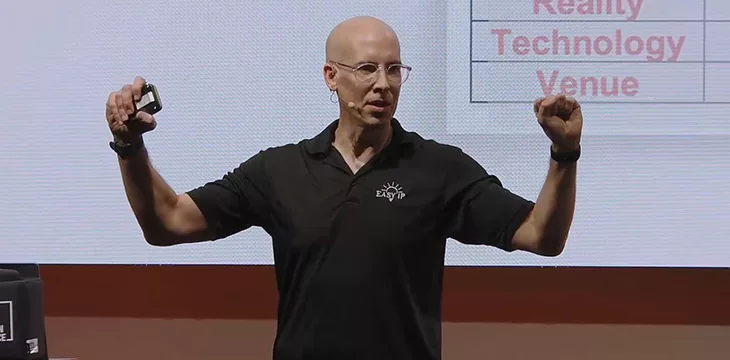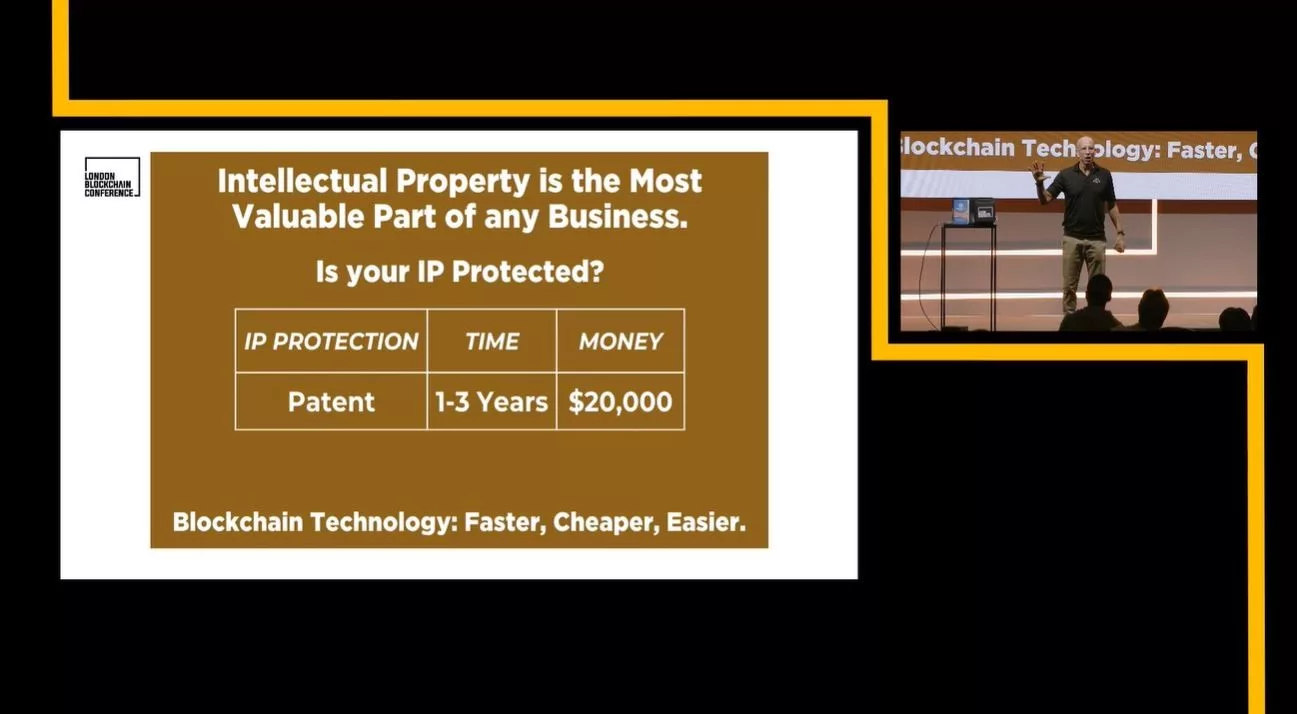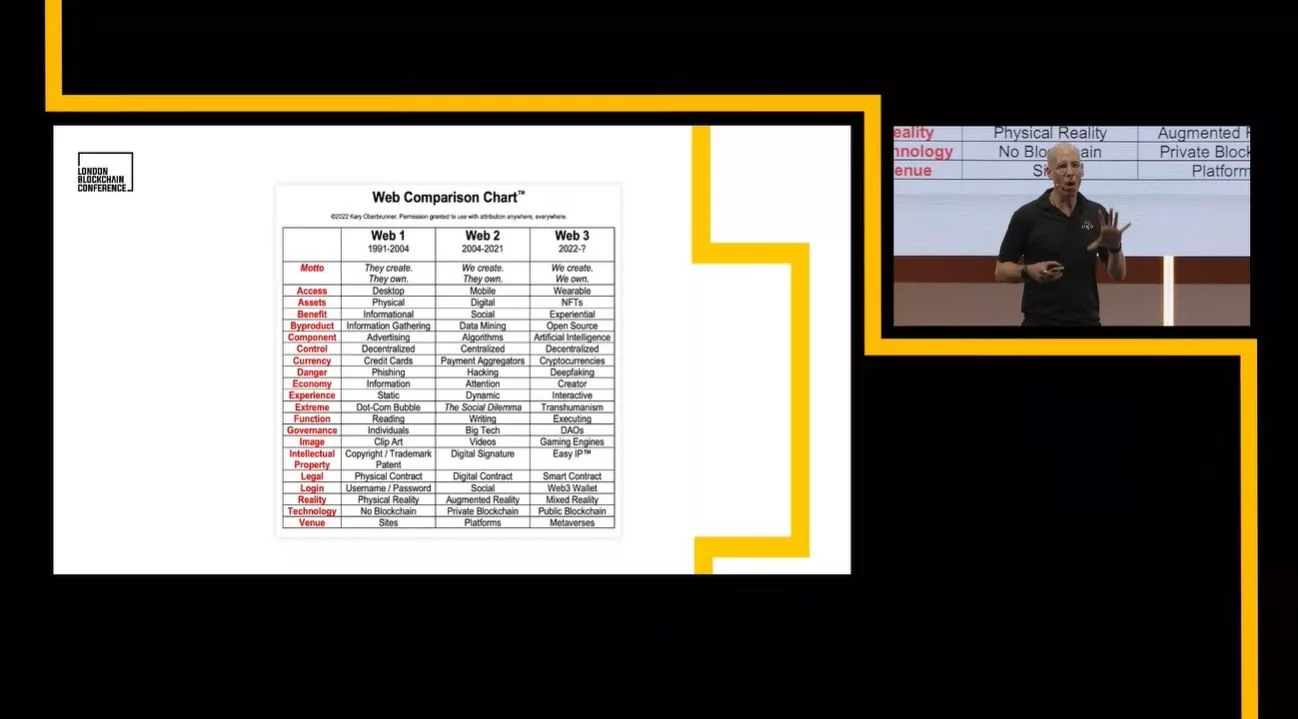
|
Getting your Trinity Audio player ready... |
Intellectual property (IP) is a thorny business. Most would recognize it as an entirely necessary institution within a capitalist society and the key to ensuring that innovation is sufficiently rewarded to encourage more of it. However, while IP promotes and protects innovation, it necessarily fetters and restricts it on the other hand. IP belonging to one inventor will inevitably narrow the field, even if only slightly, for future innovators.
Decades of legal dicta and academia have covered this tension well. However, as more aspects of the physical world become digitized and the volumes of data being produced and exploited grow exponentially over the years, new means of protecting IP will arise. As such, the topic demands renewed attention.

Enter Kary Oberbrunner, CEO of Easy IP. Oberbrunner is a bestselling author and IP stalwart within the Web3 space, helping authors and entrepreneurs protect the intellectual fruits of their labor.
A humorous demonstration of IP in action framed Oberburnner as he took the stage. Projected up on the screen was an invitation to take pictures of the presentation to our hearts’ content—alongside a friendly reminder that the presentation’s IP was under the protection of Easy IP.
Oberbrunner says he’s passionate about the topic because one of his own books, which he wrote in 2010, was stolen by a pastor in the regional United States—a clear violation of his IP. So, he assures the audience he understands how that feels.
Oberbrunner gave an interesting anecdote to emphasize the importance of IP protection. Somebody took two first-grade classes to the playground in a busy, grimy city. They put this class in the city with no fence around it. As a result, they all huddled around the teacher amidst the frightening noise of the city.
The second class was placed in a fenced-in playground. Those children played freely, gathering around the edges and having a good time. In other words, when you have protection, creativity flourishes.
Further setting the stage, Oberbrunner examined the Web3 concept. A presentation slide demarcates the different WebX iterations thus:
- Web1: “They create, they own.” In other words, Domino’s Pizza (NASDAQ: DPZ) created a website, and they owned it all.
- Web2: “We create. They own.” In other words, we as individuals created content, such as uploading a selfie to Facebook (NASDAQ: META), but that content is owned by the platform holder.
- Web3: “We create. We own.” This is, of course, self-explanatory.

It is in the world of Web3 that Oberbrunner is heading up a brand new initiative: Easy IP, a proprietary process designed to protect IP in a way that is faster, cheaper and easier.
“It’s like the Uber (NASDAQ: UBER) of intellectual property protection,” he says. “We are the transformational publisher who helps growth-minded entrepreneurs publish, protect, and promote their IP and turn it into 18 streams of income so they can change the world.”
This is done, explained Oberbrunner, by Publishing, Protecting, and Promoting—the three Ps.
The core selling point of the Easy IP platform is that it allows inventors to use tamper-proof, timestamped smart contracts to document and protect their intellectual property.

First, the person using the app must specify whether they will be sending their idea via a photo, text, or another file. The user must then describe the idea and specify whether it is hidden or visible. If hidden, the idea exists as a trade secret. If visible, the whole world can see it.
A token is created on the blockchain as well as an associated smart contract. All IP is named after the token, and when it comes time to, for instance, sell the company, they can sell that token in which is held all of that company’s IP. Legally, the creation of the token is a ‘filing event’ as far as the United States Patent and Trademark Office (USPTO) is concerned.
It is, going by Oberbrunner’s presentation, as simple as that.
According to a small cardboard hand-out given to those sat in the audience, a traditional patent could cost inventors $20,000 and up to three years of their time. Under Easy IP, the card promises protection that can be yours in as little as 24 hours at a cost of just $97.
Ease of use is no doubt central to the Easy IP proposition. That first, simple step of IP protection is so vital but is often overlooked, particularly in spheres with a glut of start-up businesses, like the digital asset industry.
“Unless you take your IP seriously, nobody else will,” he insists.
This is an issue that is going to become more central as we discover what Web3 can offer. Already in the past couple of decades, IP has become entirely central to business. Oberbrunner told the audience that by 2020, 90% of the SP500 consists of IP. In other words, 90% of the value of the smartphone sitting in your pocket is in the IP it represents rather than the circuits, chassis, and lenses that make up its physical presence.

Looking ahead, Oberbrunner predicts that this sort of quick and efficient IP protection will become the standard, just as the Digital Signature Act removed the archaic requirement that all valid signatures must be created by hand, as so-called ‘wet signatures’ rather than digital ones.
“I believe we are in the tipping point where smart contracts are going to be that wet signature moment.”
Watch: Intellectual Property & Blockchain
Recommended for you
Lorem ipsum odor amet, consectetuer adipiscing elit. Elit torquent maximus natoque viverra cursus maximus felis. Auctor commodo aliquet himenaeos fermentum
Lorem ipsum odor amet, consectetuer adipiscing elit. Accumsan mi at at semper libero pretium justo. Dictum parturient conubia turpis interdum

 11-21-2024
11-21-2024


